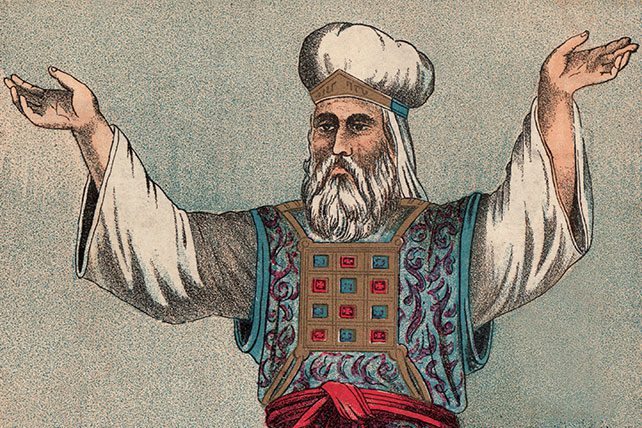Throughout the Bible, the Urim and Thummim remain among the most enigmatic objects mentioned in the sacred texts. These mysterious instruments of divine communication were used by the high priests of Israel to seek God’s will, yet their exact nature and function have puzzled scholars, theologians, and historians for centuries. What were the Urim and Thummim, and how did they play a role in biblical decision-making?
The Biblical Role of Urim and Thummim
The Urim and Thummim are first mentioned in the Book of Exodus when God commands Moses to fashion the high priest’s breastplate. Exodus 28:30 states: “And you shall put in the breastpiece of judgment the Urim and the Thummim, and they shall be on Aaron’s heart when he goes in before the Lord.” These objects were placed within the breastplate of the high priest, signifying their role in divine guidance.
RELATED: Divine Guidance
The Hebrew words Urim (אוּרִים) and Thummim (תֻּמִּים) are often translated as “lights” and “perfections” or “revelations” and “truth.” However, their precise meanings remain uncertain. The general consensus is that they were used as a means of divination, allowing the high priest to determine God’s will in critical situations. The manner in which they functioned is unclear, but they may have been used to receive binary (yes/no) answers or provide clarity in complex decisions.
The Urim and Thummim were instrumental in guiding Israelite leaders. In Numbers 27:21, God instructs Moses that Joshua, his successor, should seek the counsel of Eleazar the priest, who would use the Urim to discern divine guidance. Similarly, 1 Samuel 28:6 notes that King Saul sought answers from God through various means, including the Urim, but received no response, indicatinging his estrangement from divine favor.
Theories on the Urim and Thummim’s Nature and Use
Scholars and theologians have long speculated about what the Urim and Thummim actually were. Some theories suggest they were stones that functioned like lots, with one representing a positive response and the other a negative one. Others propose that they may have been inscribed objects with markings that revealed God’s will when drawn or arranged in a particular way.

